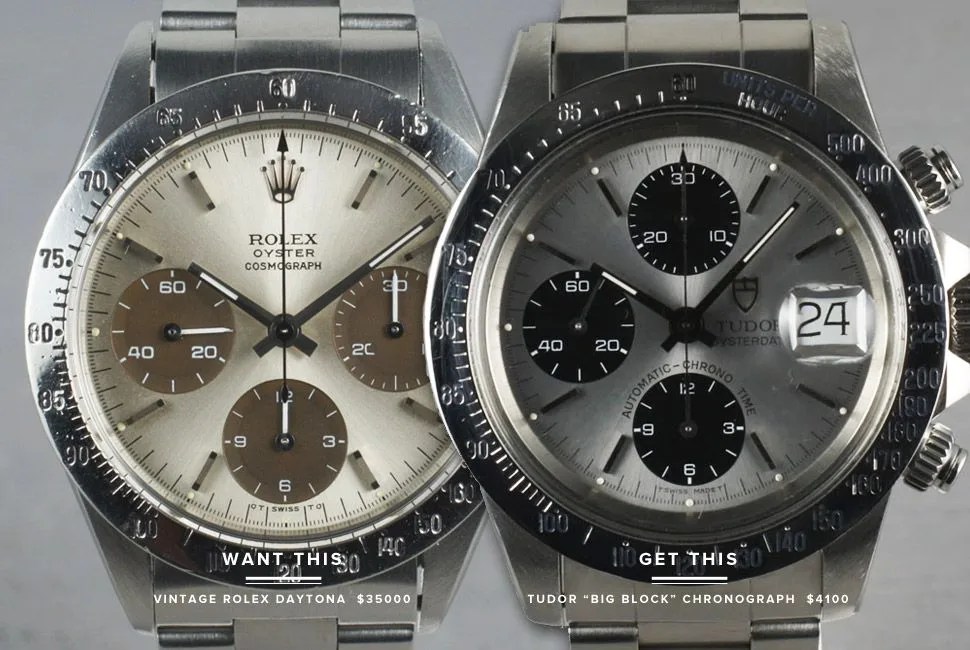Today we’ve got a vintage version of “Want This, Get This”, and its timing couldn’t be better. 2013 is the convergence of two important events in the watch world: the 50th anniversary of the Rolex Daytona and the year in which Tudor makes its American market comeback. Given the historical connection between Rolex and Tudor, we could do a series of “Want This, Get This” focused entirely on these two brands; for example, the Submariners or the Day-Date (and the Date-Day). But let’s instead hone in on two watches: one virtually unattainable to mere mortals and one that will give you the same look and Rolex pedigree without having to mortgage your house.
MORE LUSTING AND GETTING IWC Pilot Chronograph or Alpina Startimer Chronograph | Panerai Luminor Submersible 1950 or Magrette Moana Pacific Professional | Breitling Navitimer 01 or Sinn 903 St
Want This: Rolex Cosmograph Daytona
Much has been written about this most collectible and lusted-after vintage chronograph. Why is it so coveted? After all, it was a slow seller in its day (which is what makes it rare today) and the styling wasn’t particularly groundbreaking. Hell, even its movement was fairly pedestrian, a handwound Valjoux 72 that was used in a number of other companies’ chronos, from Breitling to Heuer to Wittnauer.
But herein lies the Rolex mystique — with a little help from that icon of masculine swagger and style, Paul Newman, who was seen wearing a Daytona in the 1969 auto racing movie Winning. The watch just possesses a certain je ne sais quois that continues to fascinate and frustrate watch collectors. Of course, a versatile and rugged Oyster case housing a mechanical chronograph is never something to sneeze at and may be the archetype of the modern sports watch. The popularity of present-day Daytonas has only served to further whip up the frenzy over vintage ones, making them highly coveted and very expensive. While some more common varieties can be sourced for prices in Toyota Camry territory, true “Paul Newman” references approach six figures. If you can afford one, congratulations. If not, read on.
